Curtains are the blessing and bane of interior design, but how to choose the correct curtains?
First and foremost, you should think of curtains as fully-fledged decorative elements.
They must be functional, serve a specific purpose, and reflect your style.
Curtains filter light, provide privacy, dress up windows, add warmth to spaces, and introduce textures and, if desired, colors.
A home without curtains, except for exceptional views, can give the impression of an incomplete and even neglected space.
Choosing curtains should be done with care, much like the rest of your furnishings, as they can completely transform the look of a room.
If you’re unsure, you can make this choice in the second stage after your home is already furnished.
This approach allows you to get a better understanding of spaces and, most importantly, consider color and style coordination for perfect harmony!
Let’s have a look at the types of curtains to see how to choose them!
DRAPE CURTAINS
These are the classic curtains supported by a rod or a track.
They are the most versatile and can fit any window or French door.
Depending on the rod and fabric chosen, they can complement any style.
The thing that sets the style apart, in addition to the rod and fabric, is the type of drapery.
The richer the curtain’s draping, the more it suits a classic style, while minimal, understated drapery works well with a more modern and contemporary look.
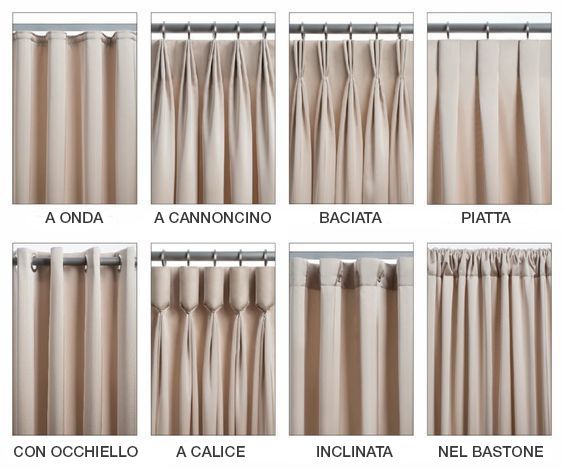
(credits: Gaia Miacola Architetto)
YOU CAN REALLY INDULGE YOURSELF….
You can use them in a simple, standalone fashion, with more or less transparent panels for varying levels of privacy and light control, or combine them with other window treatments.
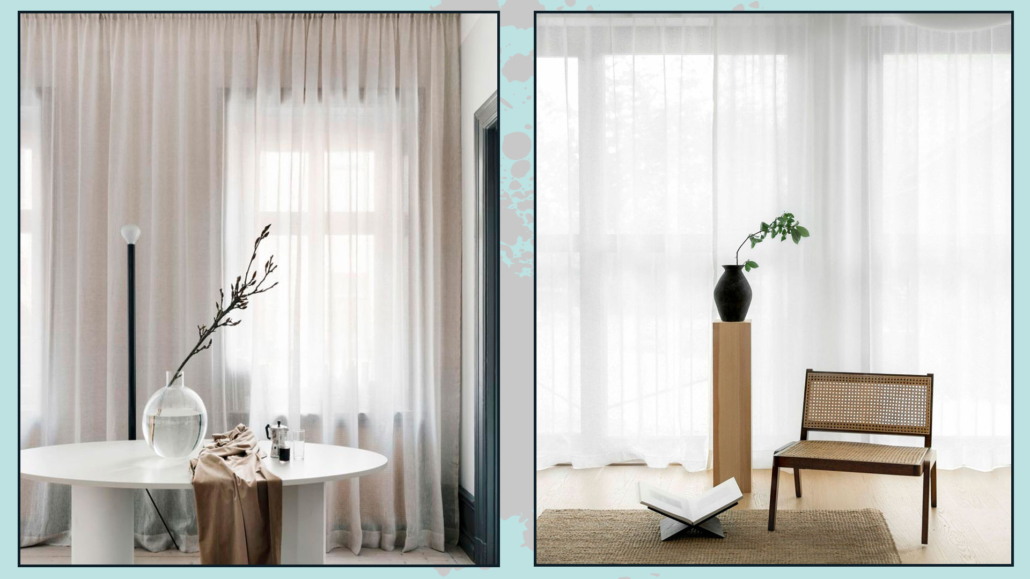
(credits: Katke Zavese; gotain.com)
You can choose to have a double drapery setup, with one, as mentioned earlier, being semi-transparent and the other blackout, which you can open or close as needed.
That is perfect, for example, in a bedroom.
Alternatively, instead of the blackout curtain, you can opt for colored fabrics to leave open at the sides to add a touch of color!
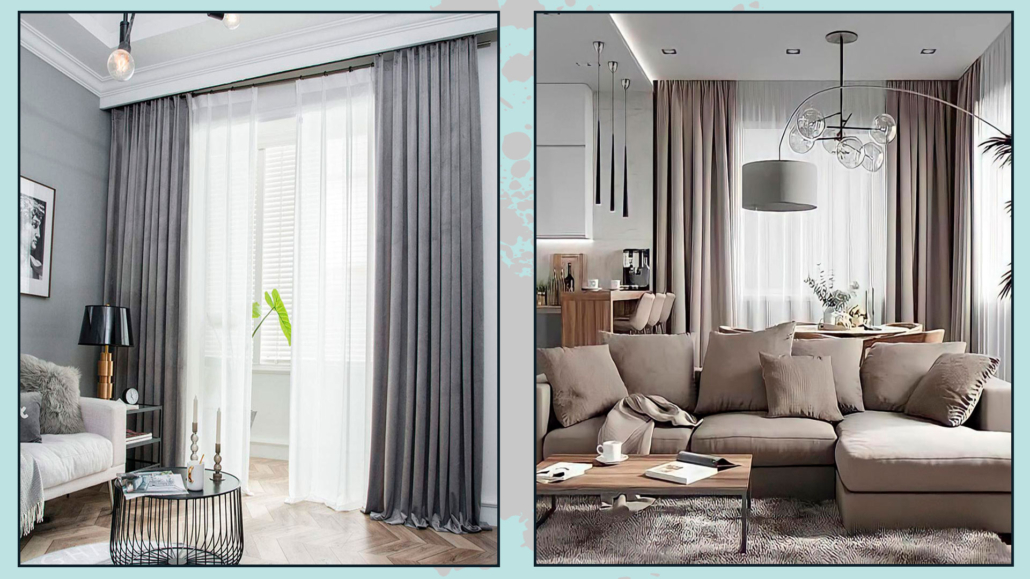
(credits: hackrea.com; pinterest)
Or you can also pair them with totally different curtains, such as panel or roller curtains (we’ll discuss these specifically later).
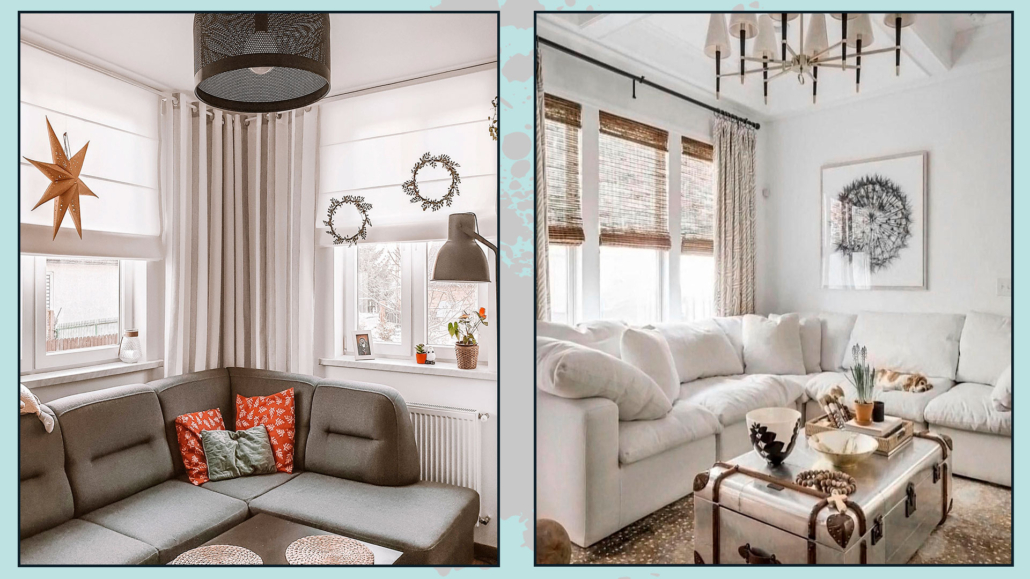
(credits: hoomebook.pl; YourSpaceForniture.com)
That can often be very practical:
For instance, if you have a French door that you frequently open and close, opening and closing the curtains could become annoying.
In such a case, you could install a simple panel curtain against the glass and keep the drapery curtains open at the sides.
At this point, you may decide to use particular and colorful fabrics to add an extra touch!
If you opt for this type of curtains, remember that one panel may be sufficient for a single-door window, while double-hung windows typically require two panels.
PAY ATTENTION TO THE MEASUREMENTS…
The width of the panels should be about 1.5 to 2 times the width of the window.
That is because curtains should extend beyond the window frame to cover a bit of the wall and, most importantly, have a soft, draped appearance.
Regarding the height (in order to avoid falling into one of the classic mistakes made when decorating), they should be installed at ceiling height or just below it, extending at least to the floor.
In areas with little passage, you can have them lean a little more for an added touch of elegance!
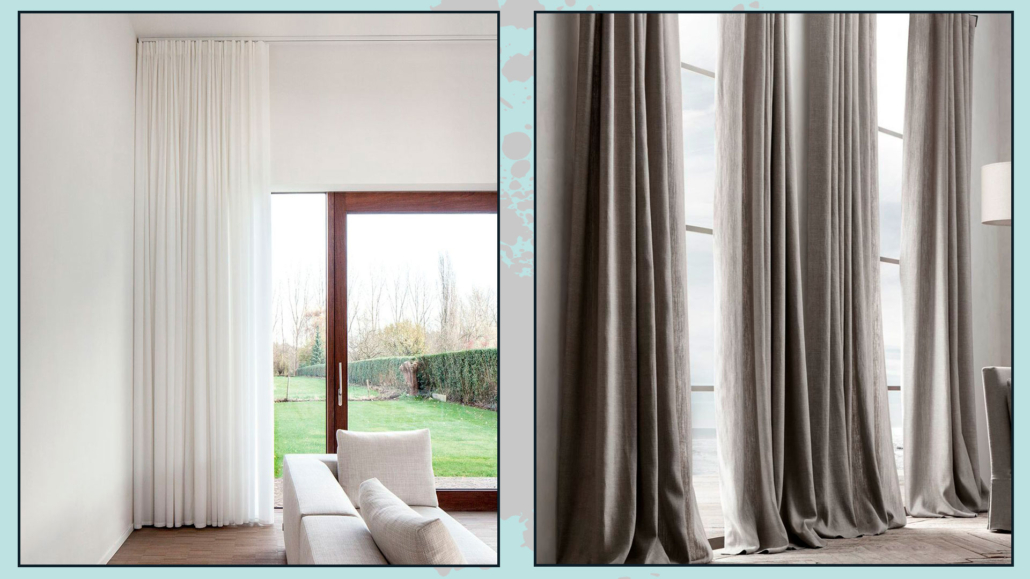
(credits: PianetaDesign.it; Lizzie Mackey)
For these curtains, there are numerous different support options available, such as rods, tracks, or even metal wires.
The choice, naturally, depends on the style you want to achieve!
Even among curtain rods, there is a wide variety: wood, steel, wrought iron, and more.
When selecting a rod, there are other significant accessories to consider, such as finials and, optionally, curtain catchers.
Again, much of this will depend on the style you’re aiming for.
Ornate finials and curtain catchers are better suited for a classic style, while more streamlined options are good for a modern and contemporary look.
ROLLER AND ROMAN CURTAINS
This type of window treatment is very sleek and fits perfectly with contemporary and modern styles.
These curtains gather the fabric at the top of the window, either with smooth panels or by rolling up, similar to outdoor shades.
Roman shades are more decorative because, when you raise them, they form equally spaced folds, creating a sense of movement.
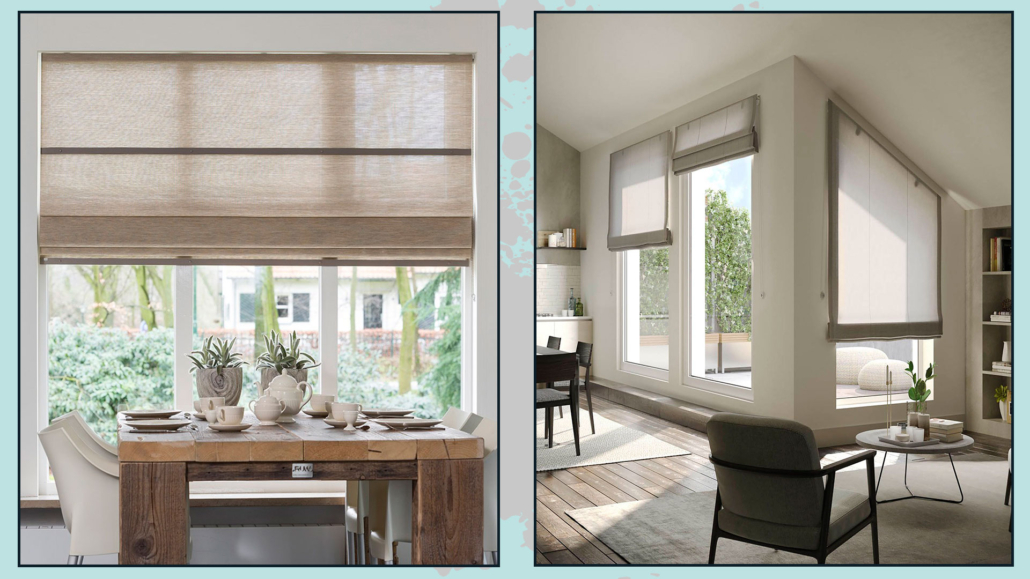
(credits: Maria Nigro; mottura.com)
They can be made from simple semi-filtering fabric or feature colorful patterns and semi-darkening options.
Roller shades can also be dual, with one being semi-transparent and the other being blackout, adjustable independently.
They can even be made from bamboo, making them ideal for a beach home!
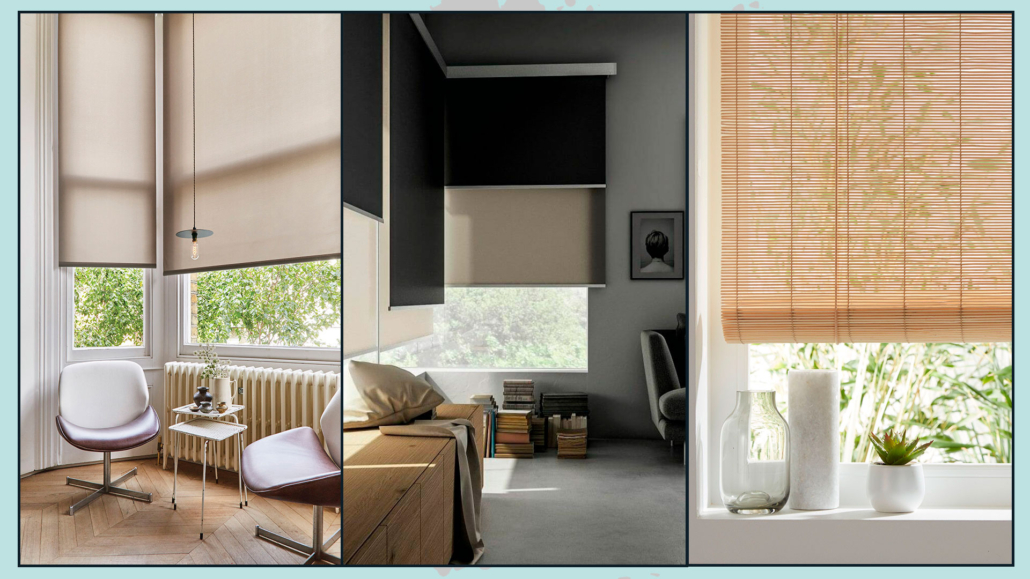
(credits: A1 blinds.co.uk; tau.com; blancohnosdecoraciones.com)
Both models can be large, covering the entire window as the drapery curtains.
In this case, you should install them close to the ceiling.
Alternatively, you can mount them at the window frame: more practical for opening and closing the window, but certainly less scenic!
If you opt for large shades that cover the entire window, remember that the shade should be wider than the window and extend a portion onto the wall, at least 15-20 cm on each side.
The window treatments applied directly to the glass work well, especially when paired with drapery curtains!
As for glass applications, there are straight panels or ones that can be gathered at the bottom using a magnet.
Glass applications are particularly suitable for small spaces, such as bathrooms and kitchens, where floor-length curtains may not be as practical.
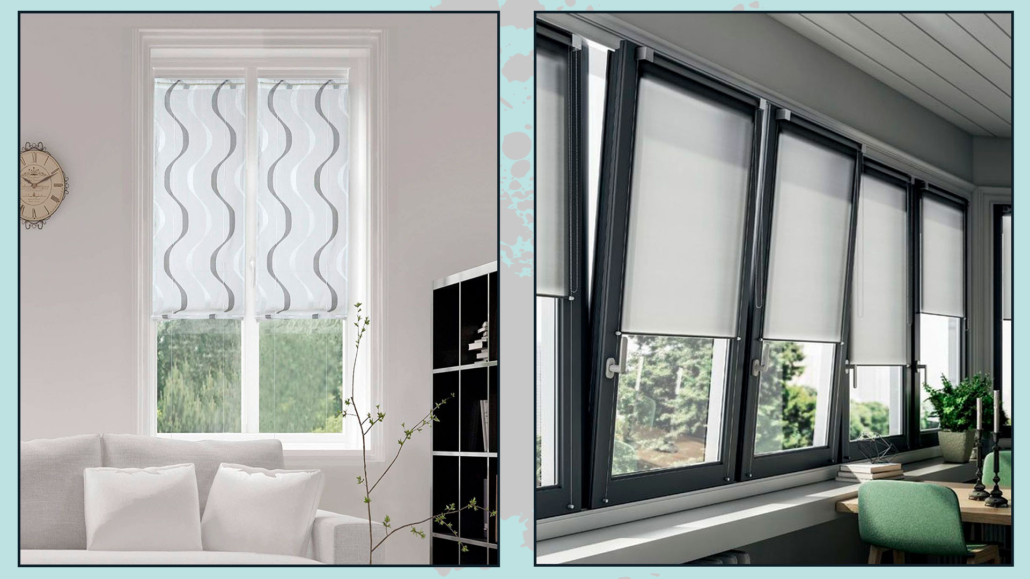
(credits: TendaTappeti.com; tao.com)
However, if space allows, even in these rooms, you can opt for floor-length drapery curtains.
While it’s true that they may require more frequent cleaning, the dramatic visual impact they create is truly unique!
SLIDING PANEL CURTAINS
This type of curtain fits perfectly with a minimalistic style and is very convenient for huge windows.
They are simple panels, often with a weight bar at the bottom to keep them taut, and they slide horizontally on dedicated tracks (similar to sliding closet doors).
They are straightforward and easy to handle and can become quite decorative when you choose fabrics with patterns!
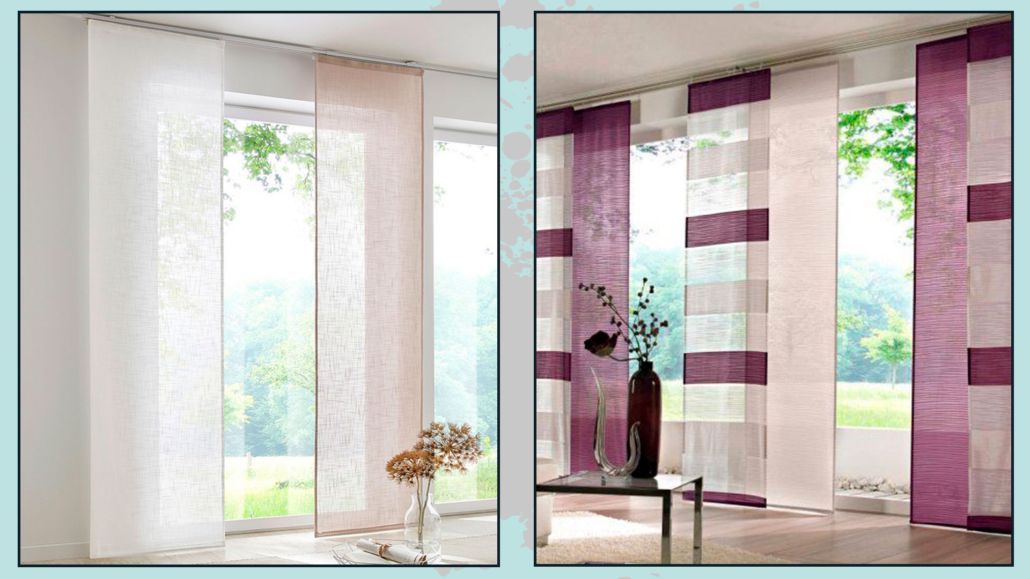
(credits: Lidia Siragusa; Valeria Bartolo)
One thing to keep in mind when selecting this type of curtain: it’s better to have, if possible, fewer panels that are wider rather than more narrow panels.
The wide panels can also visually expand the room!
Here, as with roller or Roman shades, the curtains should be larger than the window by at least 15-20 cm on each side!
HOW TO CHOOSE THE RIGHT CURTAINS?
The choice of one type over another should be based on the style and atmosphere you want to create in a space, and you can use each type of curtain in all areas of the house.
When it comes to curtains, try to maintain consistency by using the same type in all rooms to create a cohesive look.
Of course, you can choose to have double drapery in only one room and not throughout the house, but if you opt for drapery, make it drapery everywhere (with exceptions for bathrooms and kitchens), and if it’s roller shades, then go with roller shades anywhere.
In cases where you combine different curtain types, such as having Roman shades on the glass and drapery, you can skip the drapery everywhere else but keep the Roman shades consistent.
I hope this article on how to choose the right curtains has been helpful and enjoyable for you. If so, let me know in the comments!
Feel free to share it with anyone you think might be interested, I would be honored, and it will help me gain more exposure.
If you feel that your home, or any specific area of it, doesn’t reflect your personality enough, don’t wait any longer and book your consultancy!
This post is also available in: Italian

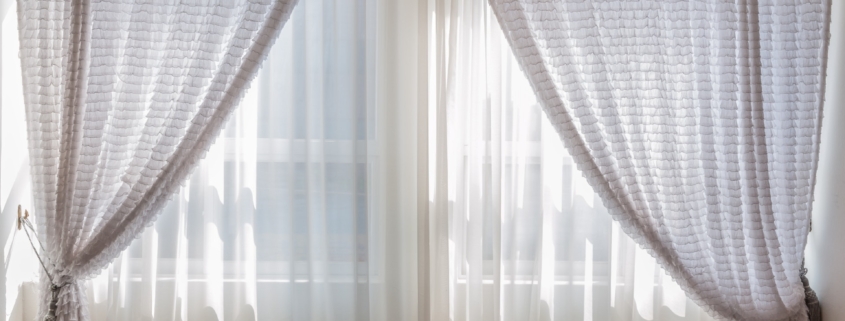
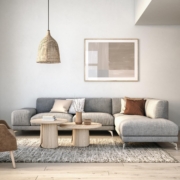
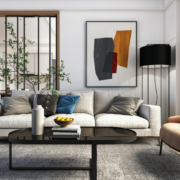
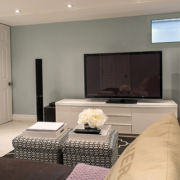
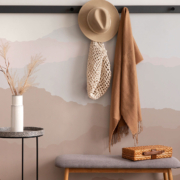
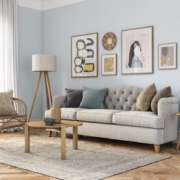
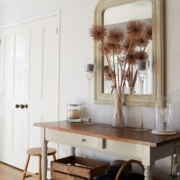


Leave a Reply
Want to join the discussion?Feel free to contribute!